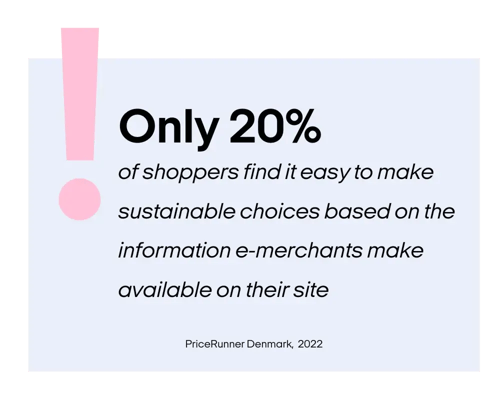Stores are still failing to meet consumer expectations
Consumers are increasingly prioritizing sustainability in their purchasing decisions, according to a 2023 study in the peer-reviewed journal "Sustainability. In a Danish survey from PriceRunner, 12% say that they have at least once opted out of an e-commerce store due to their lack of consideration for the environment and sustainability, and that number is expected to increase rapidly.
If we look at the consumers of the future alone, the 18-29-year-olds, the figure is already almost doubled to 22%.
However, PriceRunner’s studies also show that it is difficult as a consumer to ensure that you act as sustainably as possible when shopping online. Only 20% responded that they agree with the statement, “I get enough information from e-merchants to be able to make sustainable choices when shopping online.”

It seems clear that e-commerce stores have much to gain from communicating better about their efforts to promote sustainability.
Lars Sørensen, CEO of the Danish award-winning outdoor chain Eventyrsport, states: "Danish stores, both online and physically, have a responsibility to make it easier for Danes, for example, by making it easier for customers to find the products that are produced with an emphasis on sustainable materials and quality.”
It is not only within B2C that information on sustainability is in demand. In 2022, the Danish Chamber of Commerce showed that nearly half of Danish companies have adopted formal policies or guidelines that consider sustainability when making purchasing decisions for their businesses.
While personalization and recommendation platforms are not typically associated with promoting sustainability, they offer significant potential to support this goal. This article will explore how these platforms can be leveraged to enhance sustainable practices in e-commerce.






